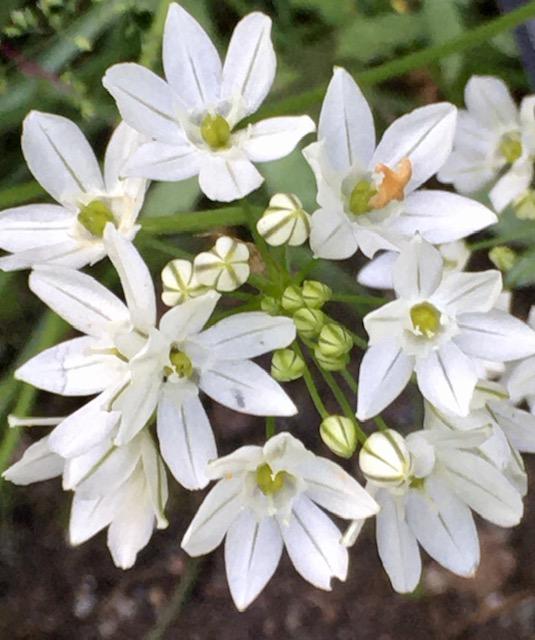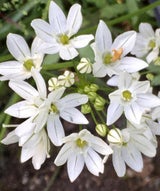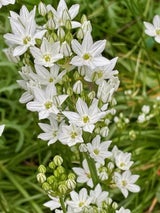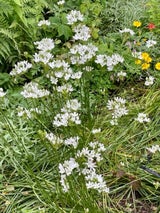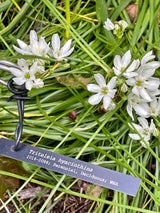- In the Garden
- >
- Gardens
- >
- Gardens A-D
- >
- BC Habitat Garden
- >
- Triteleia hyacinthina
Triteleia hyacinthina
Common name: Wild hyacinth, fool's onion, Hyacinth brodiaea
Triteleia hyacinthina is a spring-blooming perennial bulb with delicate white umbels of flowers. A native of western North America, wild hyacinth is found in fields, grasslands, meadows, and forests. Growing to a height of 60 cm/24 in, it flourishes in full sun with well-drained soil, moist winters and dry summers. This makes it a good plant for gardens in our climate. And key to a pollinator garden as well. Wild hyacinth supports a range of bees and butterflies in the early season.
The bulb of wild hyacinth was cooked and eaten by First Nations. Anthropologists had long described British Columbia’s indigenous inhabitants as hunters and gatherers. But according to ethnobotanist Nancy Turner, these groups were the owners and stewards of gardens. “That brought me to a new way of thinking,” says Turner.
The pictures were taken in the BC Habitat Garden in spring.
Text and photos by Hughie Jones
